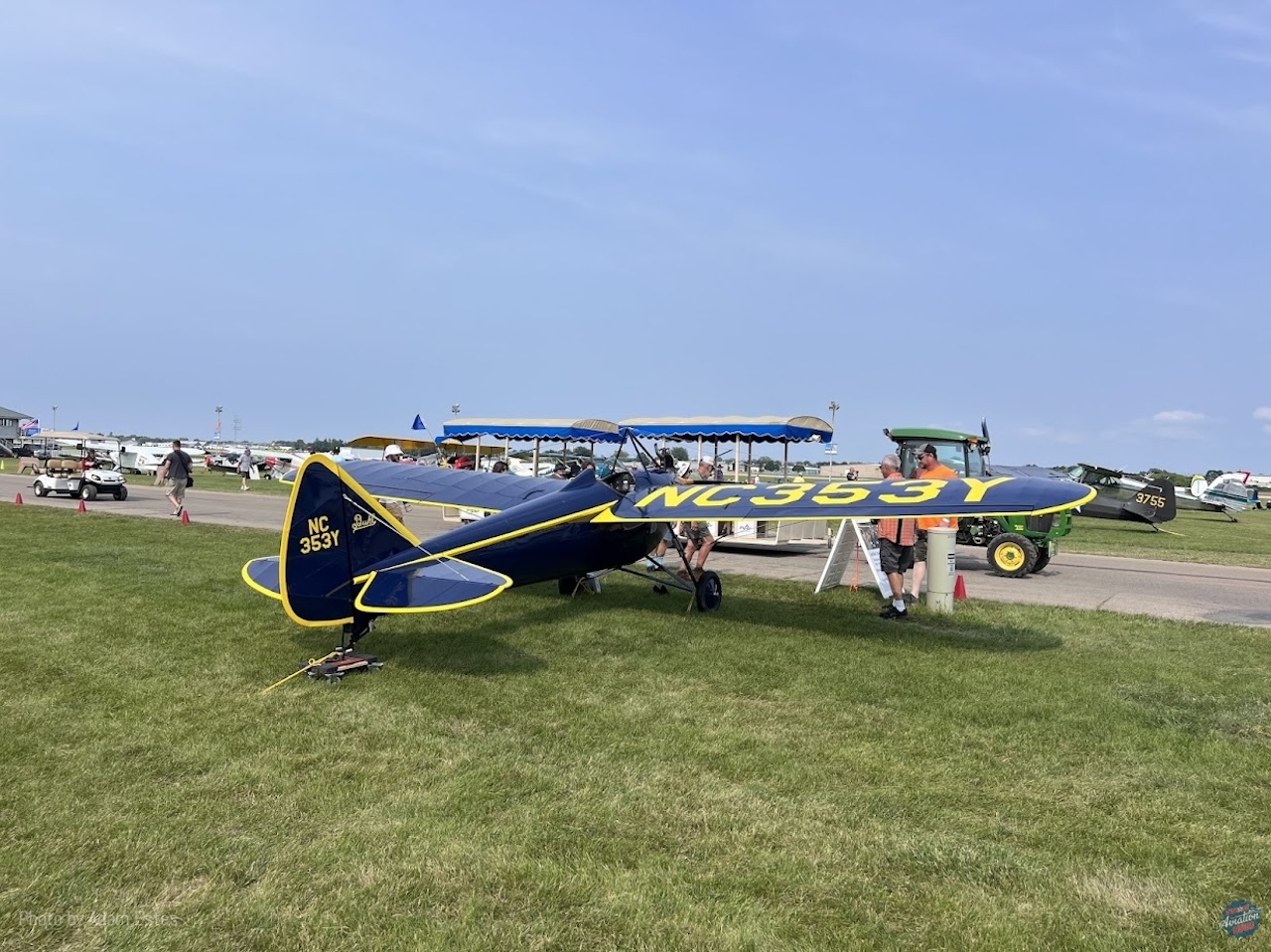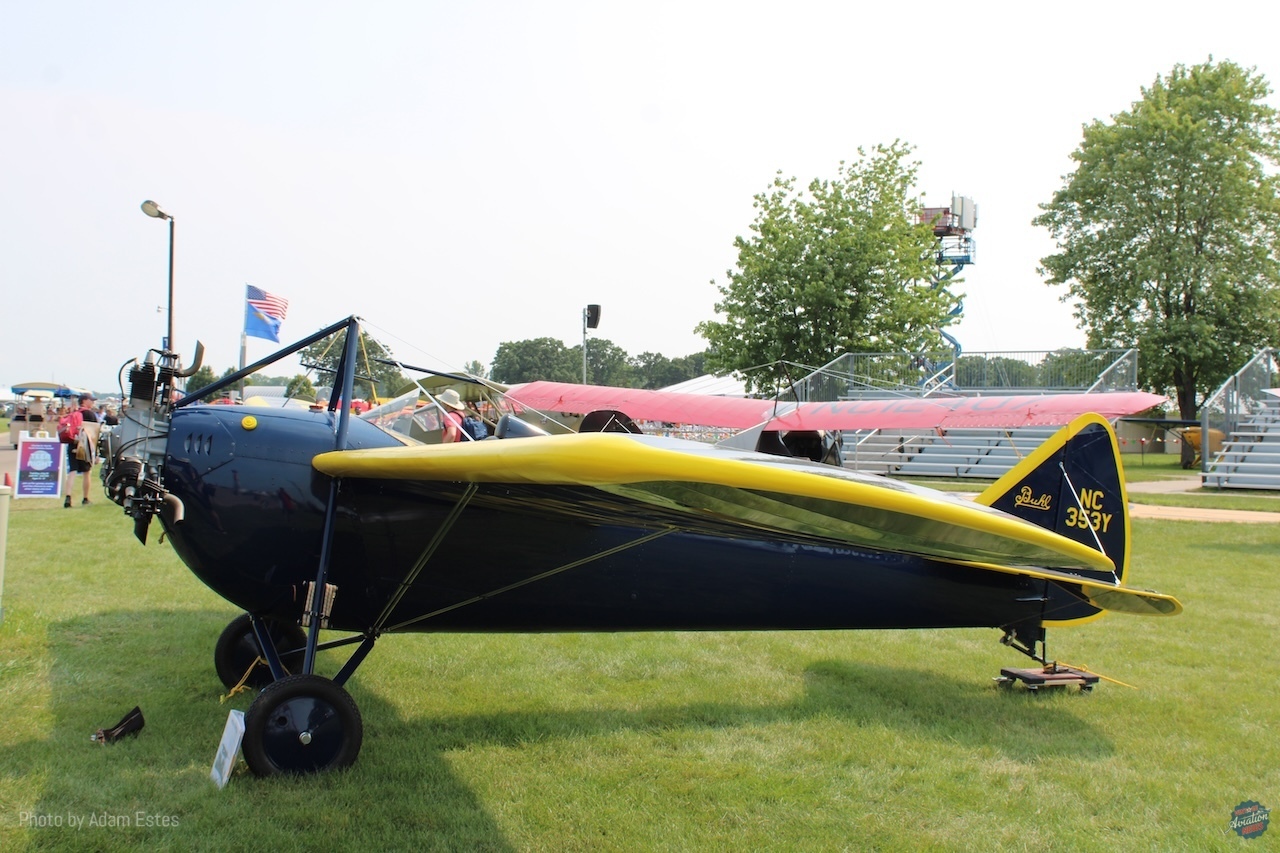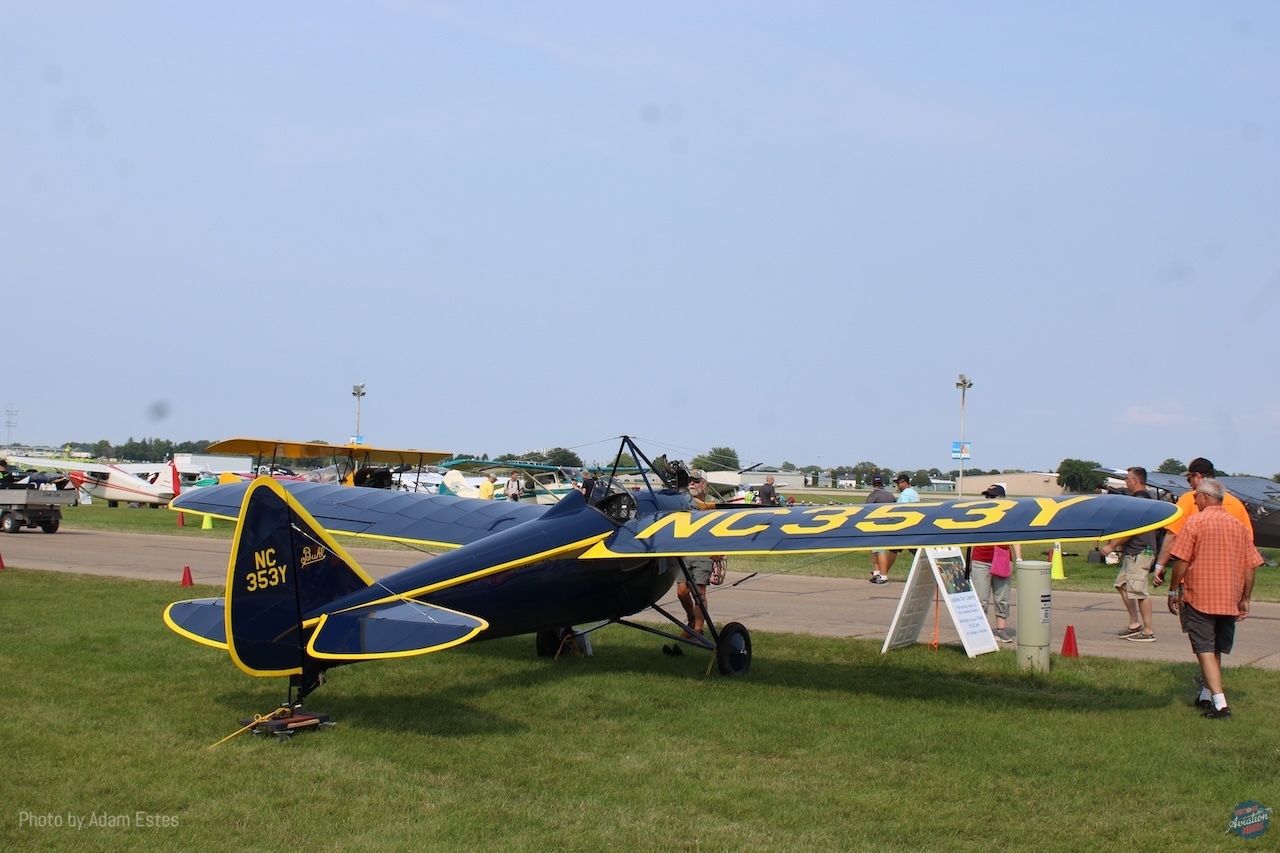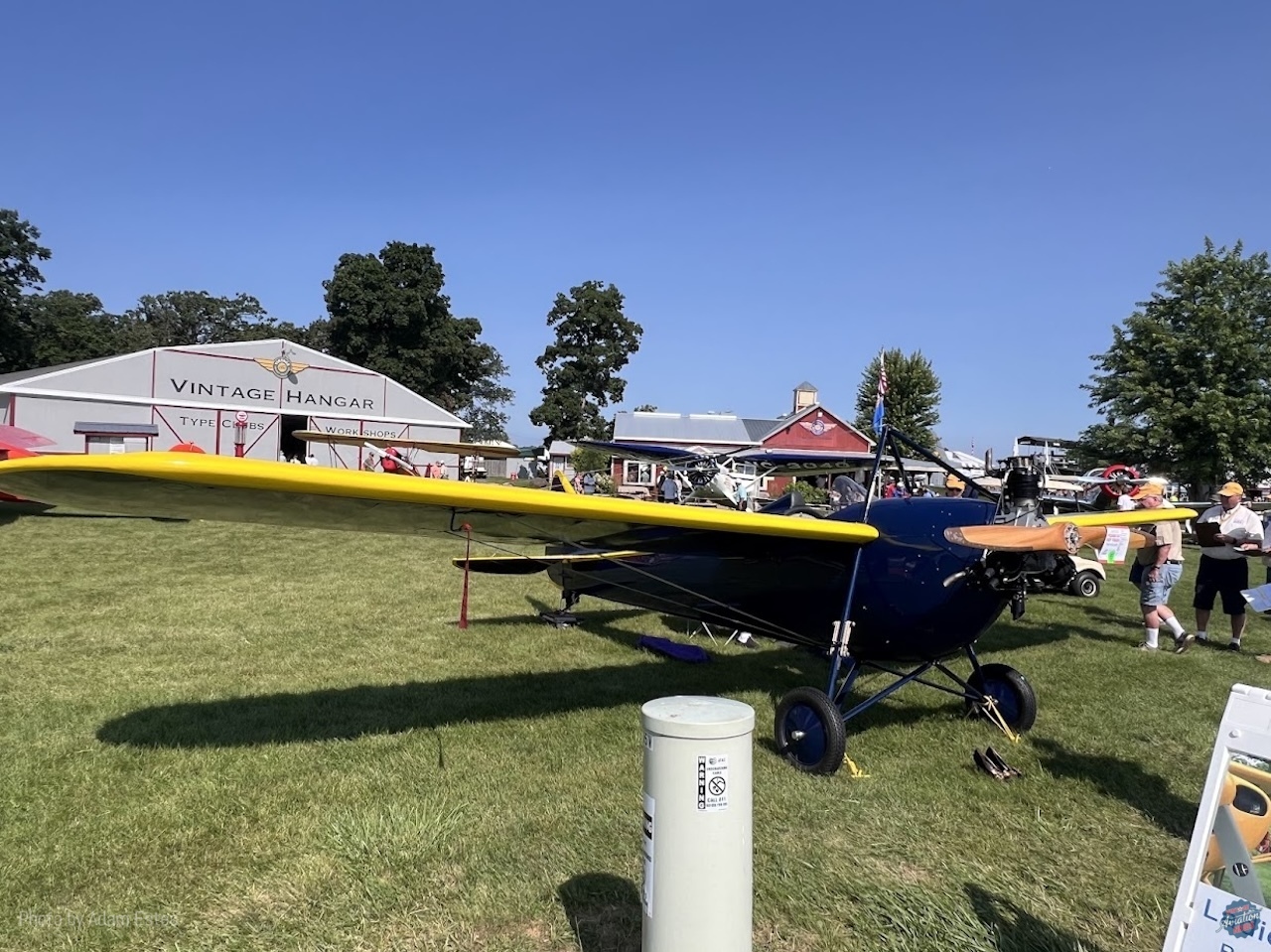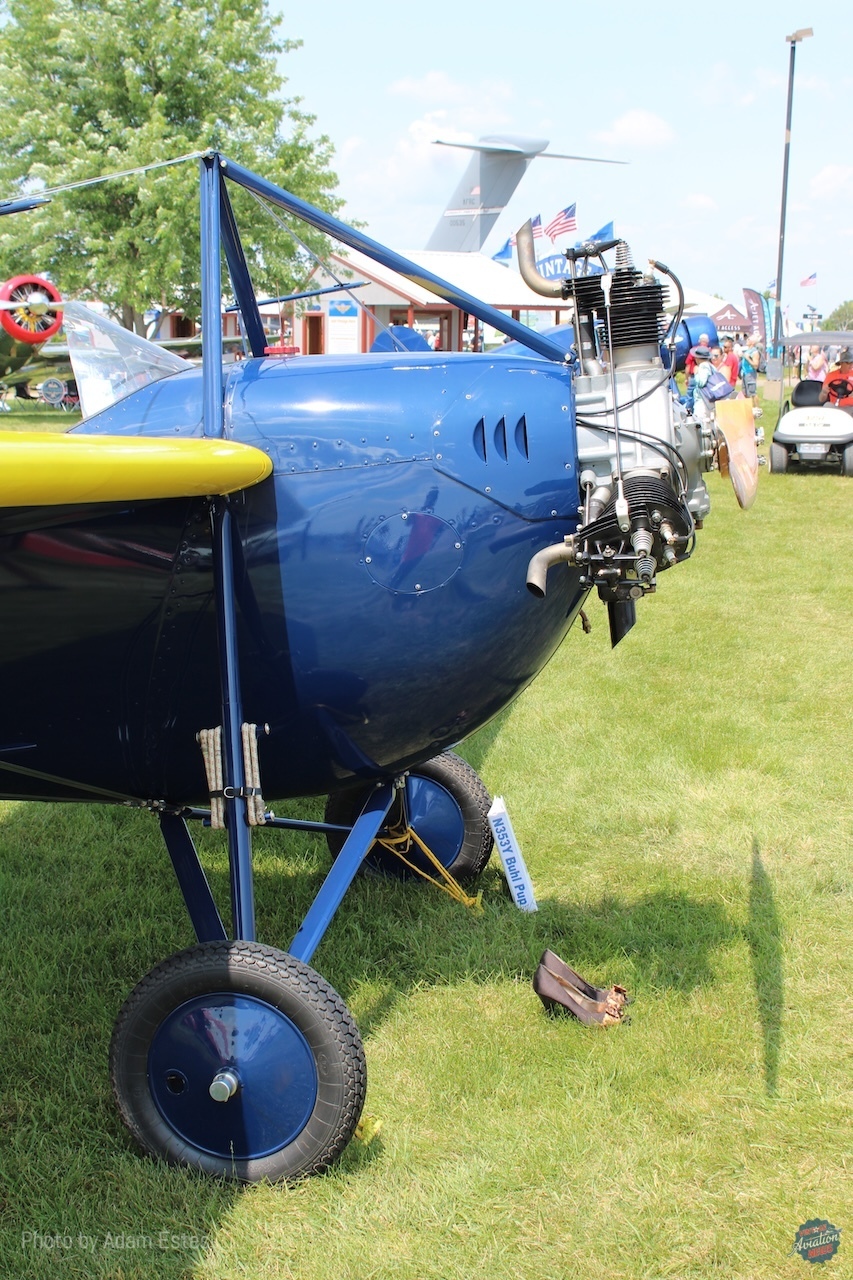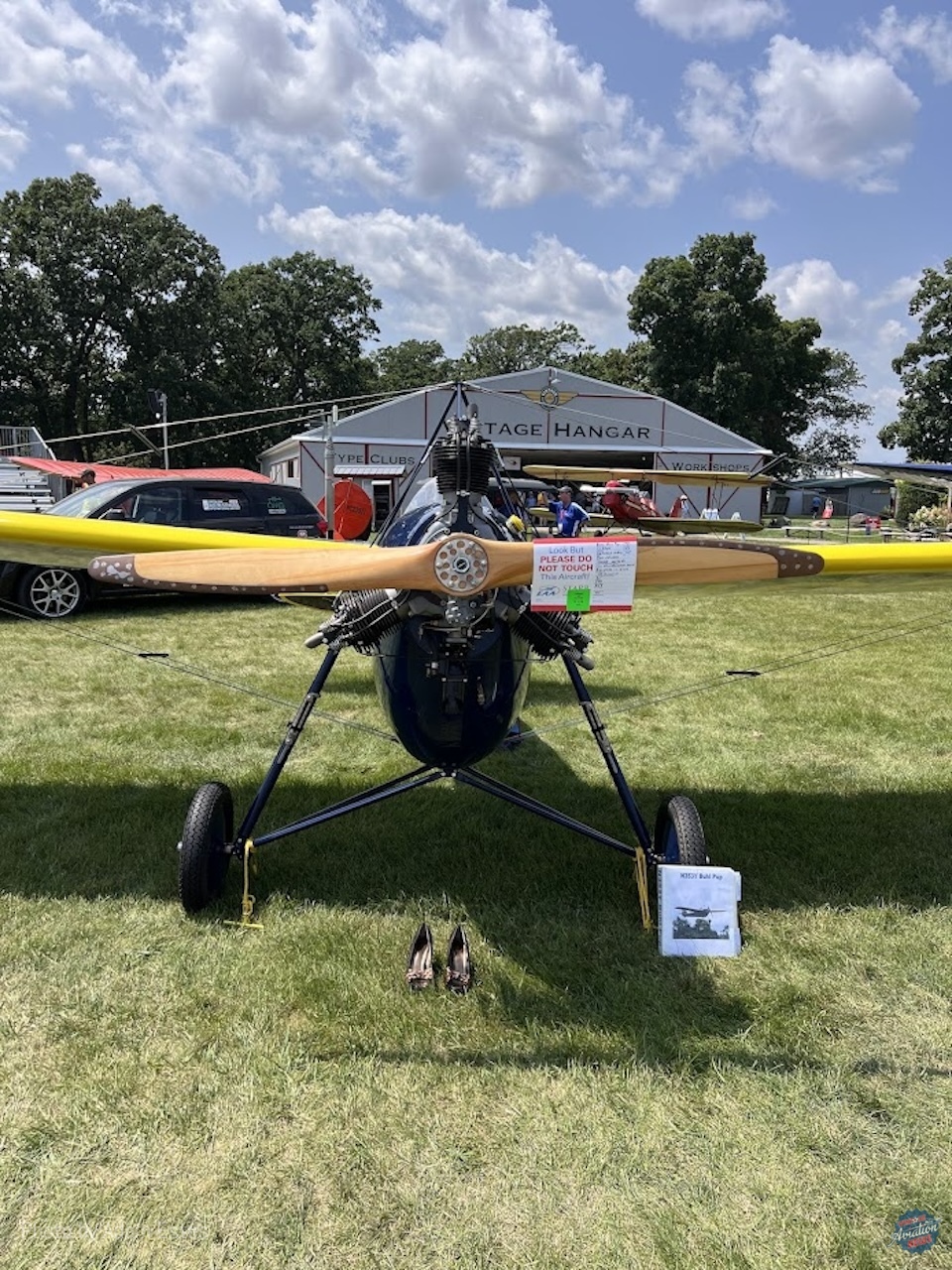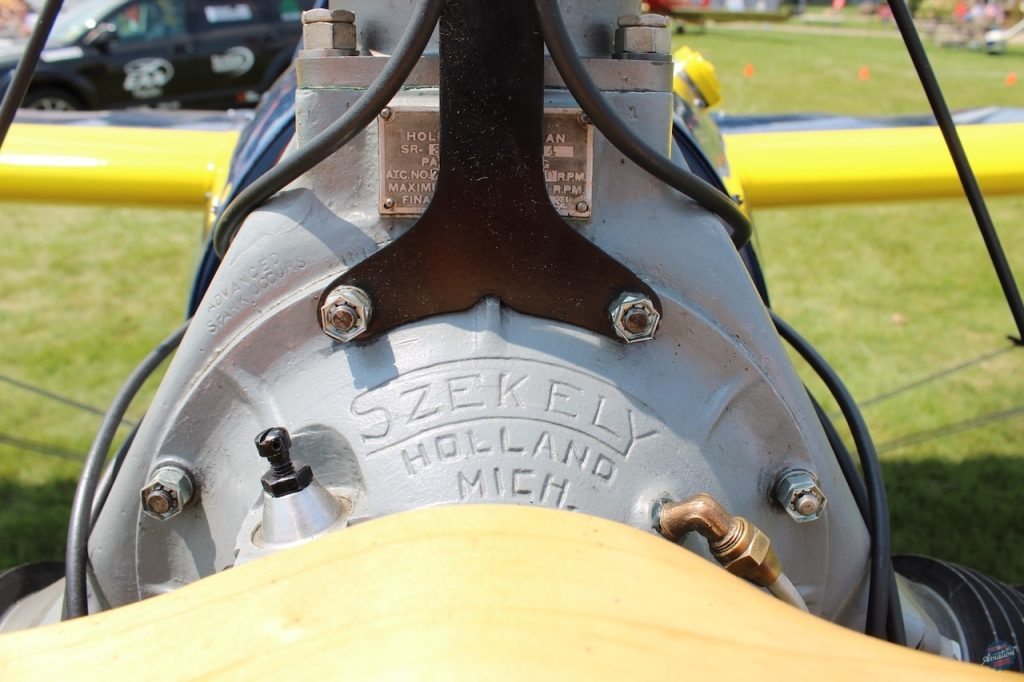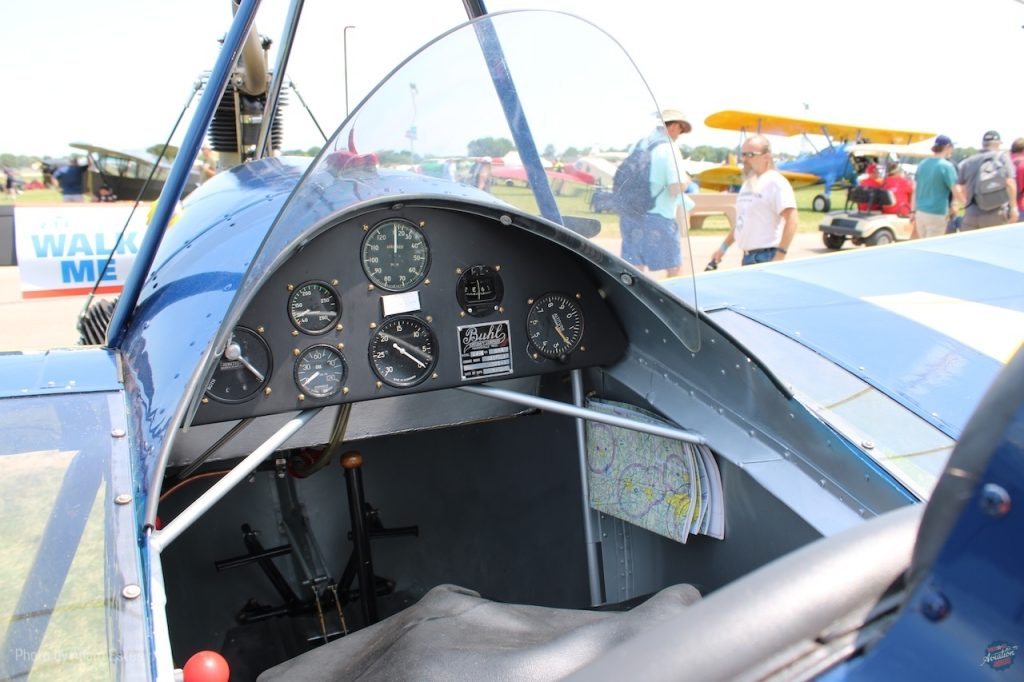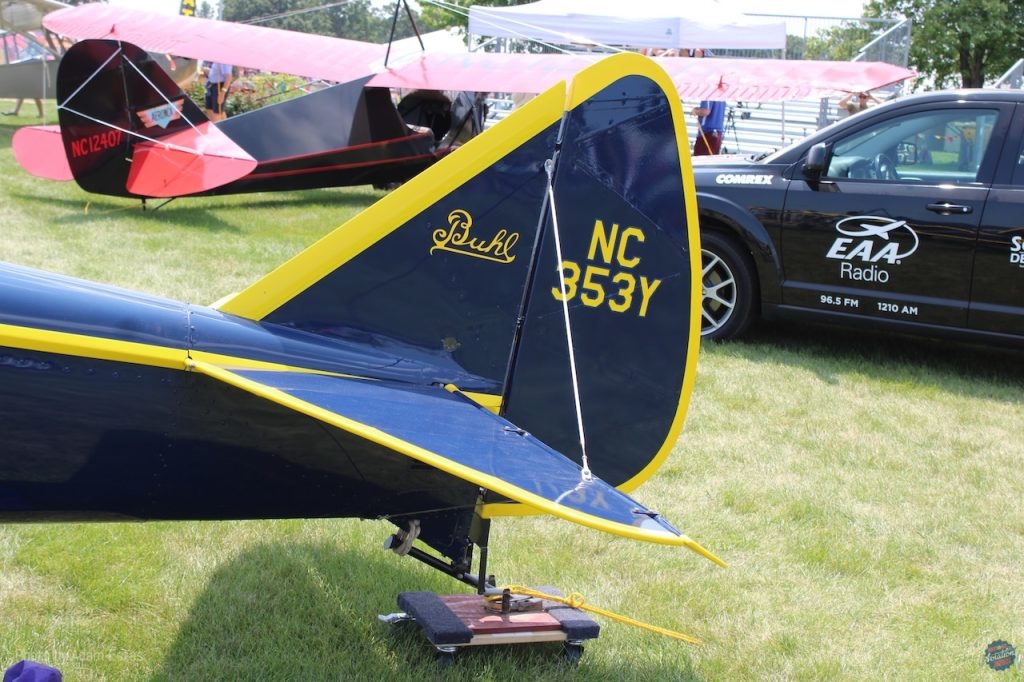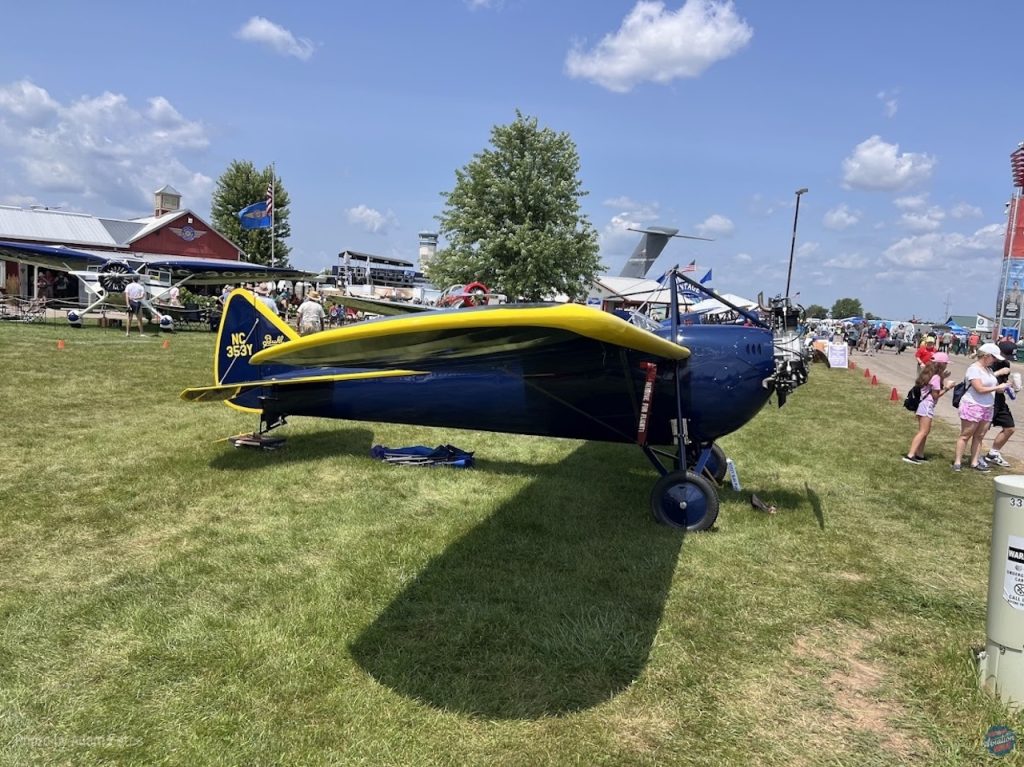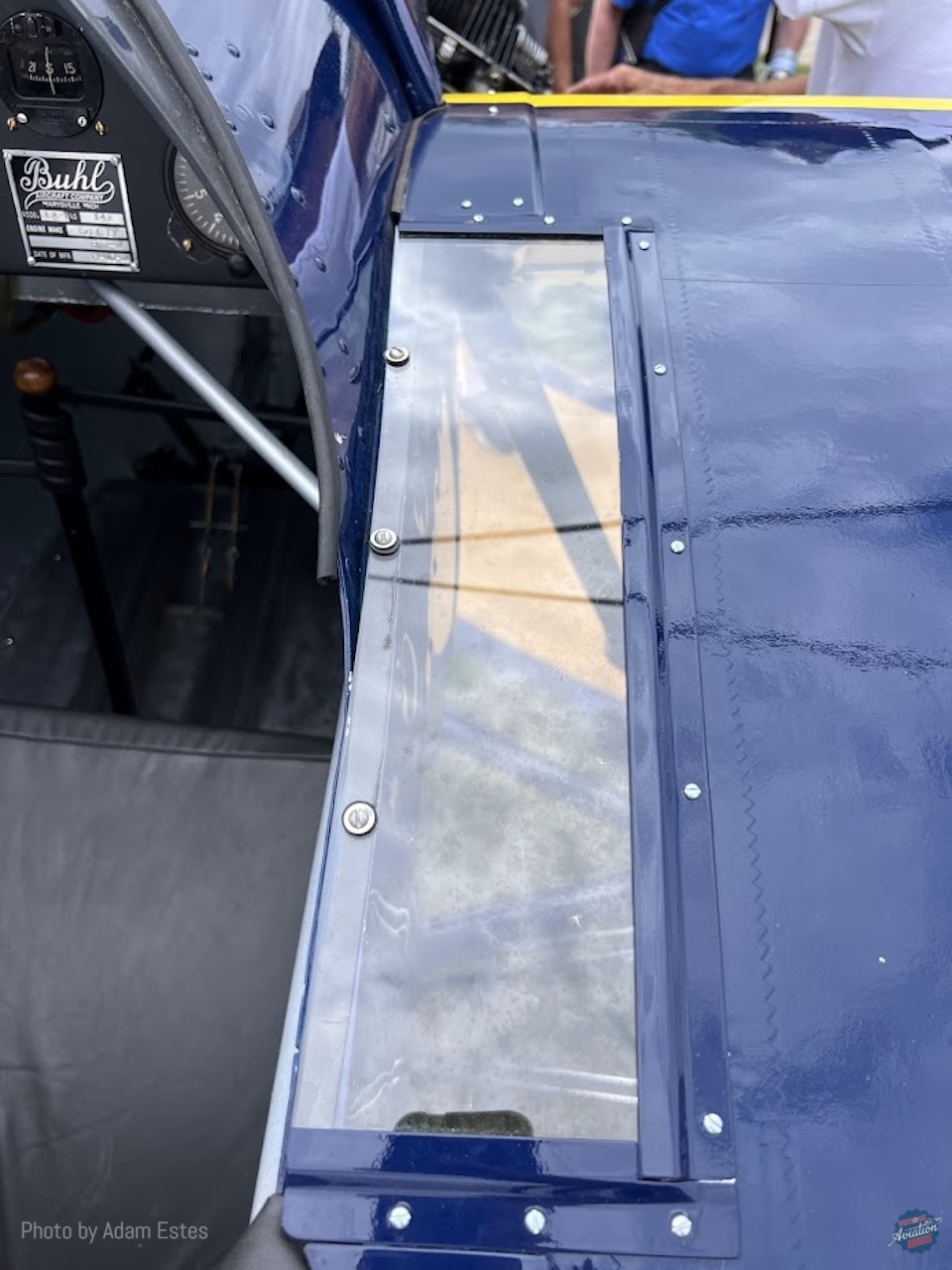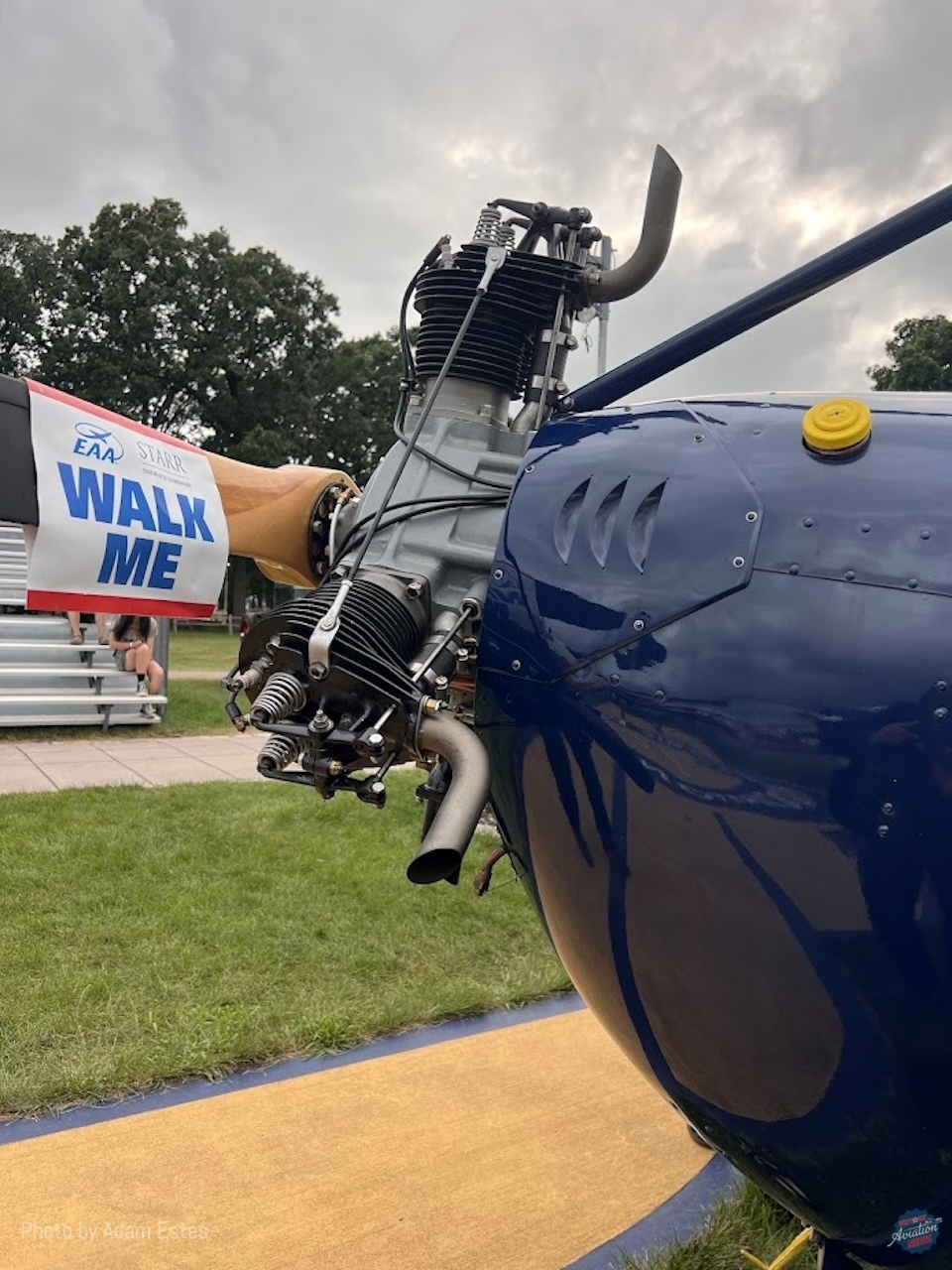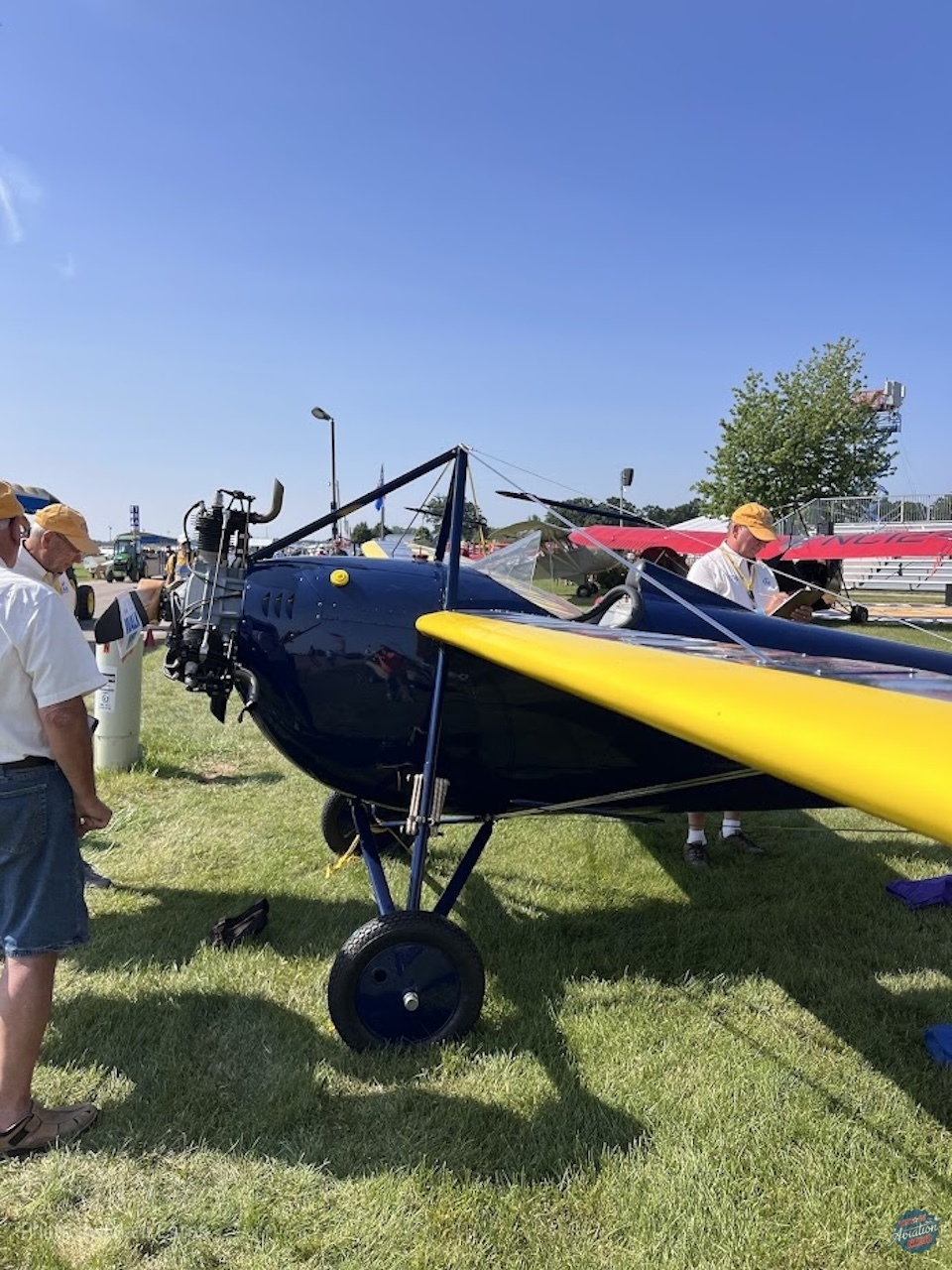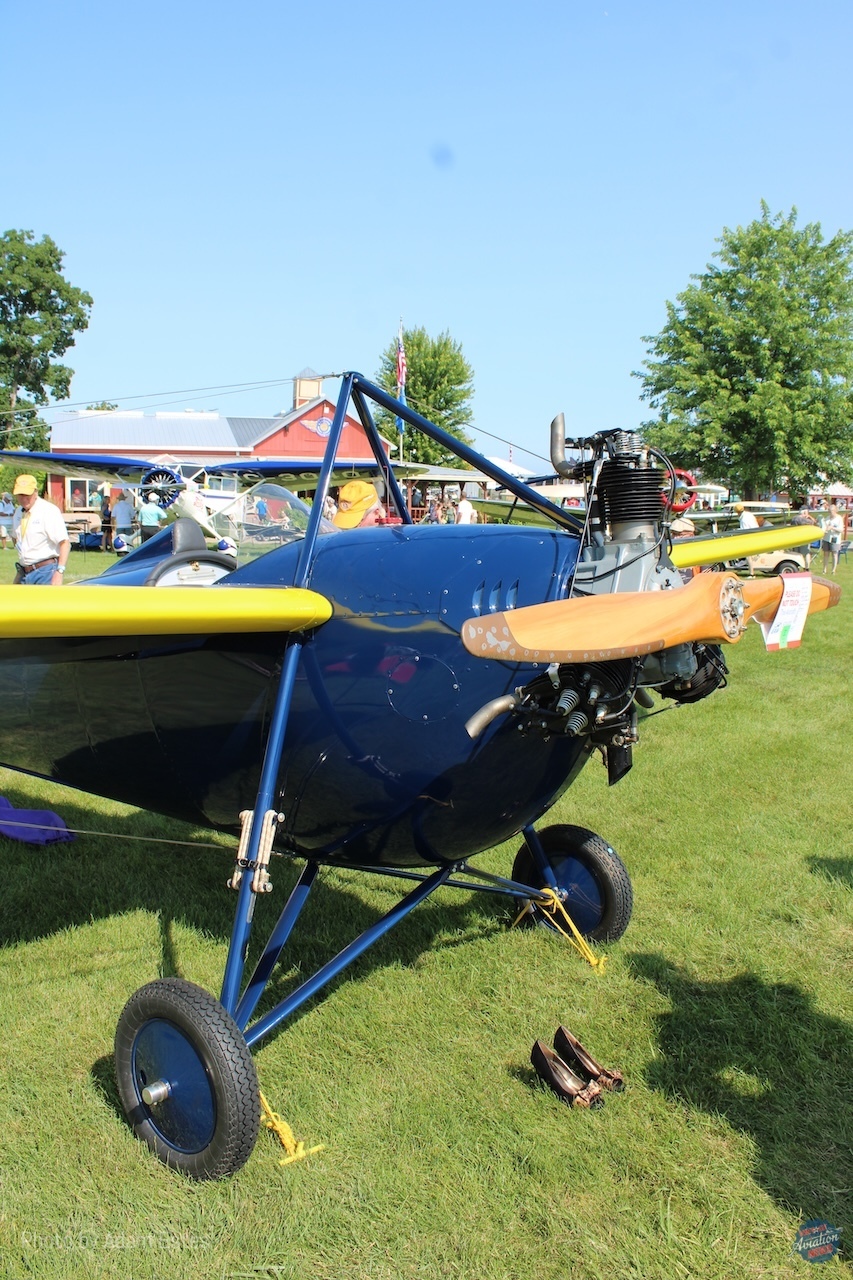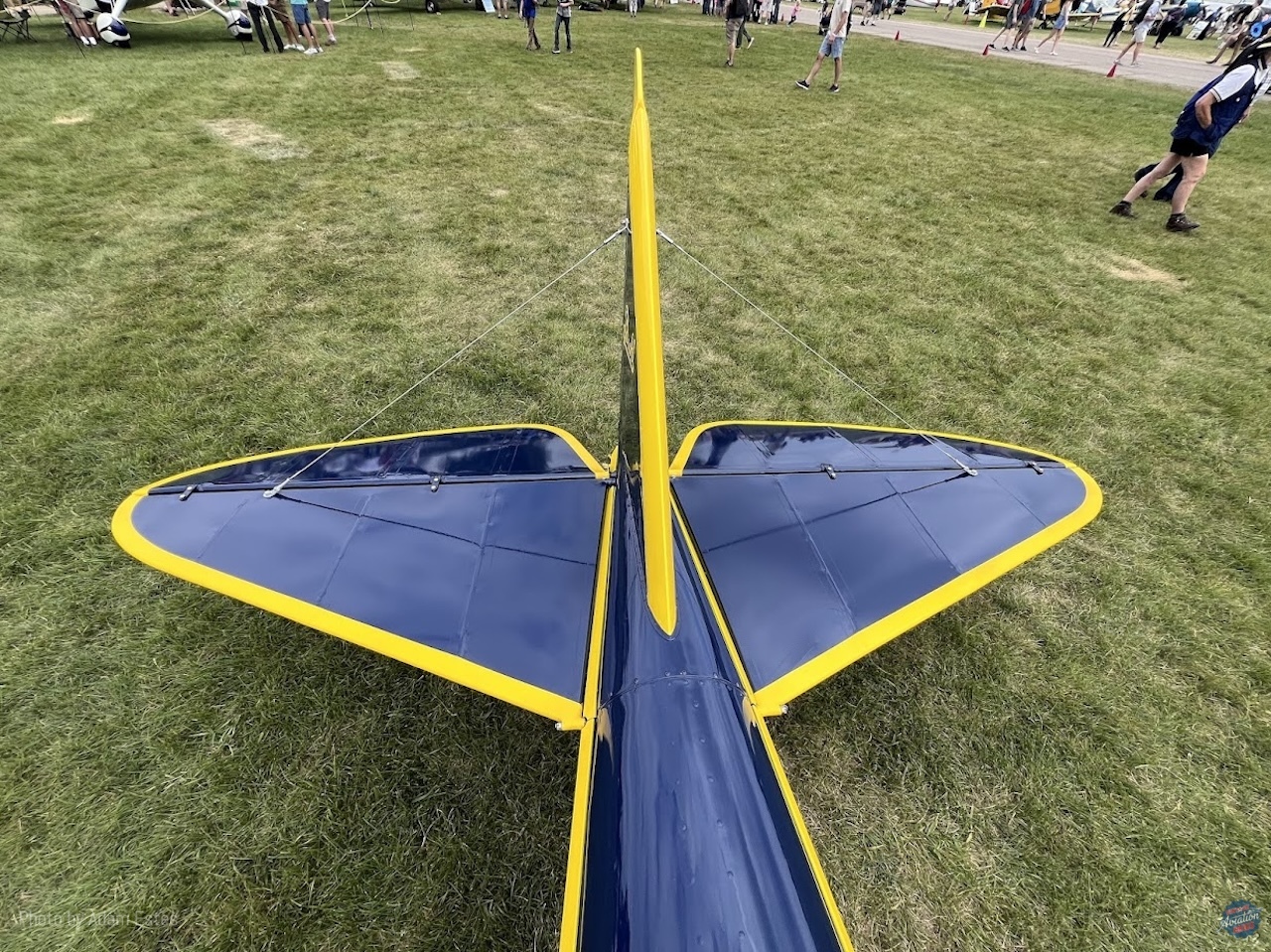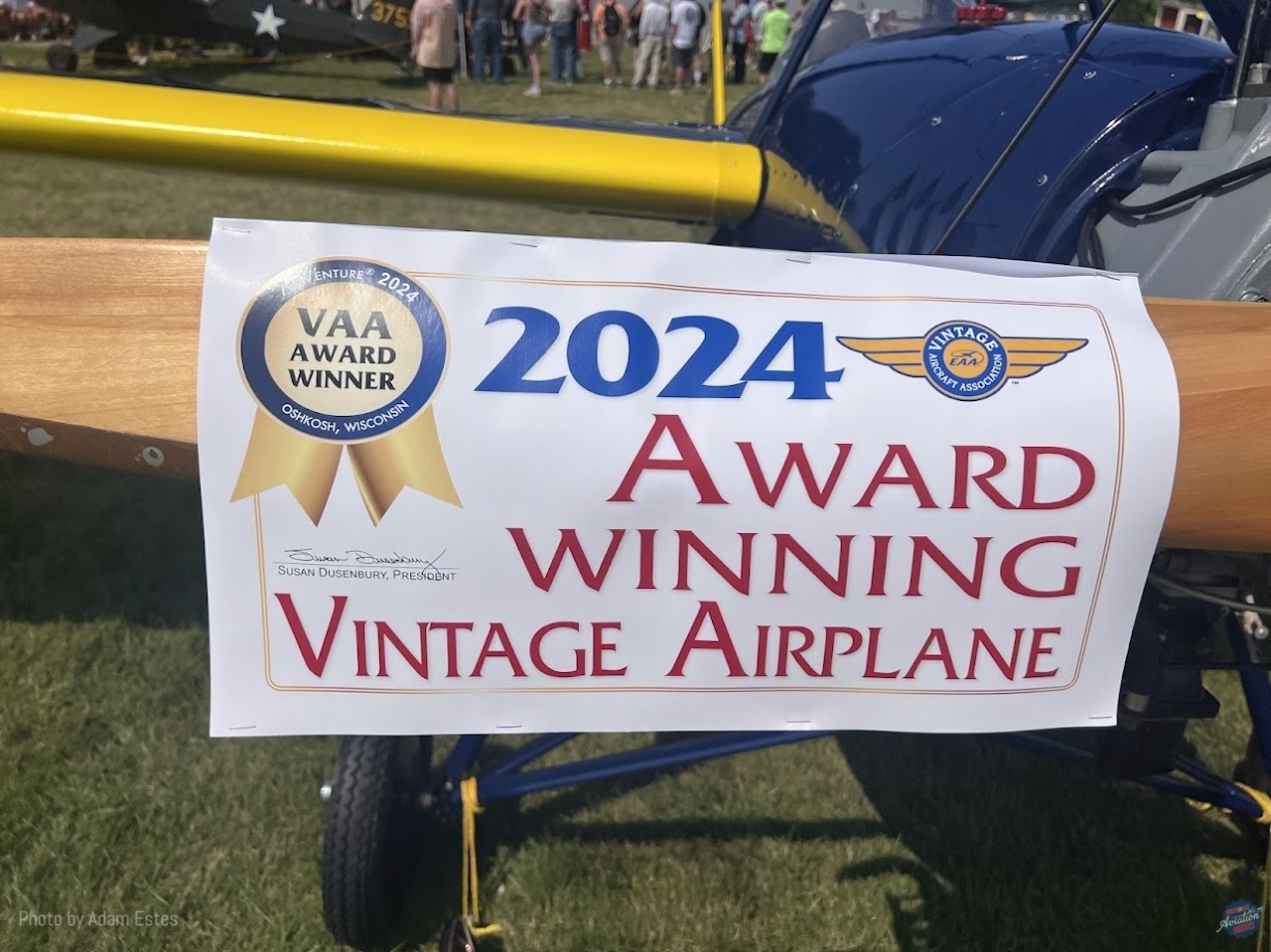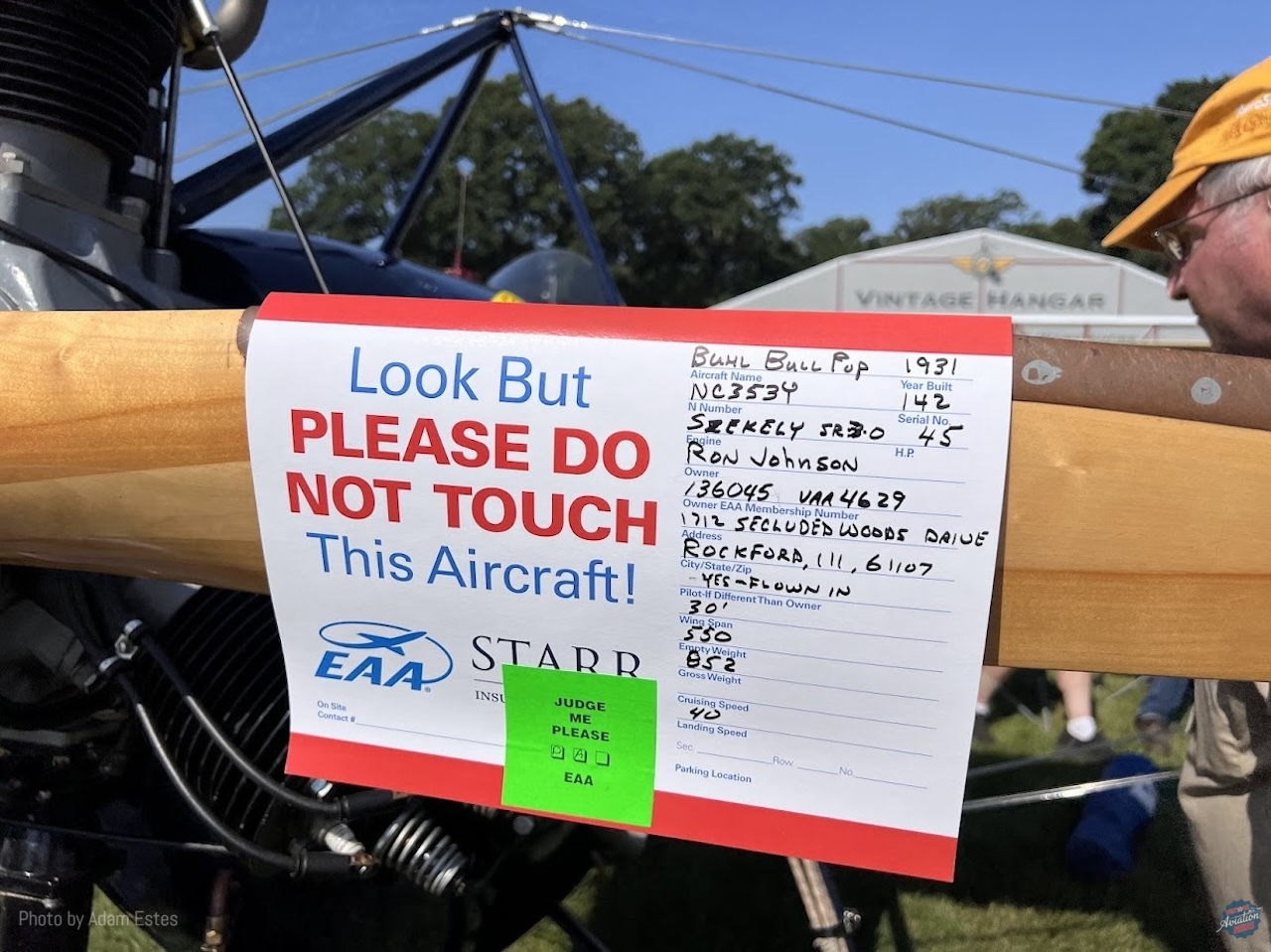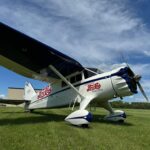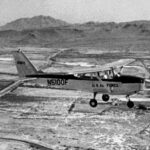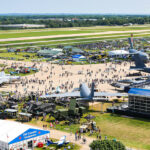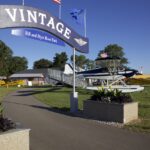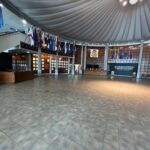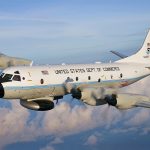There is nothing quite like going to the Vintage Section at EAA Airventure Oshkosh and taking the time to appreciate a meticulously restored airplane from the 1920s or the 1930s that looks as though it flew straight from the factory, 90 or 100 years ago. Such is the case for a now awarding-winning Buhl LA-1 Bull Pup, flown to Oshkosh by vintage aircraft restorer Ron Johnson of Rockford, IL. This rare aircraft would not be at Oshkosh without his years of patience and hard work taken to bring the aircraft back from obscurity in the California desert to flying over the lush fields of Wisconsin to Oshkosh.
Johnson has had a particular attraction to the Bull Pup, which was a small monoplane designed for sport flying by the French designer Étienne Dormoy for the Buhl Aircraft Company, which was established in Detroit, MI but had set up a factory in Marysville, MI. Powered by a single Szekely SR-3 (pronounced ‘Say-kai’), three-cylinder radial engine that produces 45 hp, often nicknamed the ‘Zeke’ engine, the LA-1 (Light-Airplane 1) Bull Pup also came with options for a short wing variant with a 28 ft span for competitive flying, a longer-wing 32 ft version for high altitude flights, and a floatplane version. But being first flown in 1930 and introduced to the flying public the following year, the Pup was also one of many planes built for the private market that had the misfortune of being marketed at the height of the Great Depression, drastically reducing sale orders. Indeed, by 1932, the Buhl Aircraft Company itself was closed indefinitely after producing approximately 100 LA-1 Pups. With the dissolution of Buhl Aircraft, the Pups were scattered to the wind, with some owners removing the original Szekely radials in favor of more modern power plants such as Continental and Franklin inline engines, especially considered the ‘Zeke’s’ bad habit of cylinder cracking. Today, the Bull Pup is a rare sight across the country, though a couple have survived long enough to be restored by private owners or aviation museums. Ron Johnson has owned two of these rare Bull Pups (NC348Y and NC353Y), which he takes great pride in maintaining. NC348Y had been previously restored and flown by vintage pilot Dan Neuman, who won the Grand Champion Antique award for that particular Buhl. Later, NC348Y was acquired from Johnson by California collector Walter Bowe, and is maintained in airworthy condition there. The latter Bull Pup which Johnson has flown to Oshkosh, though, has had quite the journey to get to Airventure 2024.
Manufactured as serial number 142 and issued the registration number NC353Y, the aircraft rolled out of the Marysville factory in May 1931 and was sold to Charles Hughes of Brentwood Heights, CA in October of 1932. The aircraft did not spend too much time with Hughes, as it went to another owner in Santa Monica the following month, followed by yet another owner in Santa Monica, who made repairs to the wings of the Bull Pup. In November 1933, ownership passed to Anderson Offutt of San Diego. It had been reported that the aircraft had an accident on September 28, and later a crack-up on December 6, after which Offutt purchased a new fuselage to replace the damaged one.
The aircraft then went through another series of owners throughout the rest of the 1930s, all in the areas around Los Angeles and San Diego. In February 1938, owner William Fred Linne of North Hollywood reported making repairs to the aircraft and recovering the fabric on the controls. In March 1939, a new owner, Alhambra resident Warren Knox Layne, added a tailwheel to better operate from paved runways as opposed to the original tail skid. The paper trail for NC353Y went cold for over 60 years until July 2002, when the aircraft was noted to be owned by Edward Warren of Johnson Valley, CA. It was at this time that Ron Johnson acquired the aircraft, which was then a pile of parts in the desert; the wooden wing structure left with no fabric, the aluminum fuselage was bare, and the engine was disassembled to just a bare crankcase. Johnson clearly had his work cut out for him, but he took up the challenge, and brought the plane home to his two-car garage in Rockford. Slowly but surely, Johnson worked patiently on the fuselage’s sheet metal skin, and inspected the wooden spars and ribs for the wings. Once the necessary repairs were made to the wing, Ron covered it in Polyfiber in preparation for painting.
Setting the fuselage on a couple of sawhorses, Johnson would rotate the metal body for ease of access. He also rebuilt the turtle deck behind the pilot’s headrest for the open cockpit, and test fitted the tubular frame for the empennage before permanently reattaching the tail surfaces back to the fuselage and applied fabric to the frame of the horizontal stabilizers, while aluminum sheets were riveted to the frame of the vertical stabilizer, just as would have been done at the Buhl factory in 1931. Ron commented that “It takes a LOT of parts to make one three cylinder Szekely engine work reliably!” That was certainly true for NC353Y’s engine, with Johnson maintaining a shelf full of parts to keep the little Zeke engine running. Being familiar with the engine on his other Pup, he knows how much of a task it is to keep it in running order. Johnson also restored the throttle quadrant and refitted the controls to the aircraft. Gradually, the Bull Pup was resembling an airplane once again!
As far as the paint scheme for the aircraft was concerned, Johnson found a 1935 photo of NC353Y used by historian Peter Bowers in an article on the Bull Pup. It shows that the aircraft had border stripes following the contours of its tail surfaces and wings, with a single stripe down the length of each side of the fuselage. The aircraft now appears in an overall dark blue scheme with yellow stripes and for the colors of the registration number on the wings and tail. Seeking to keep the aircraft as original as possible, Johnson has not added any wheel brakes and has put a tail skid back on the aircraft. Though it makes slowing the aircraft down a challenge, Johnson is used to this and this is precisely how the Bull Pups were originally designed to operate from small grass or dirt strips, with wheel brakes and tailwheels being added by owners flying off paved runways. Fortunately, Johnson’s local airport, Poplar Grove, is a home for many antique and vintage pre-war aircraft, and like many airports in these parts of the country, the airport has both a paved runway and a grass strip.
With the Szekely engine and a wooden propeller back on the repainted Bull Pup, it was time to take the airplane out of the garage and reassemble it at Poplar Grove Airport. Like many engines of its day, the Szekely requires a mechanic to pull the propeller by hand. However, it is not unheard of for such an engine to require several swings to turn over, with a few puffs of the motor before the wooden prop slows down to a complete stop. But at last, the engine coughed to life and the engine sang its song. By the end of May 2024, Johnson was taking NC353Y for its first post-restoration flights over the fields of Illinois and was making preparations to fly up to Oshkosh, some two and a half hours by road up from Rockford. One third of the way to Oshkosh, however, a spring on the top cylinder broke loose, forcing Johnson to land near a private airstrip. Fortunately, plenty of people turned up with tools to help repair the engine on the field, and Johnson was soon back in the air, and would safely arrive at Oshkosh without further incident. At the 2024 Airventure, Johnson won Silver Age (1928-1936) Champion for his Buhl LA-1 Bull Pup NC353Y. It also certainly left an indelible mark on the thousands of visitors that walked by, including the author of this article, who had several opportunities to appreciate the beauty of this Bull Pup. Hopefully, this will not be the last we see of Ron Johnson and his magnificent Bull Pup in the air!
